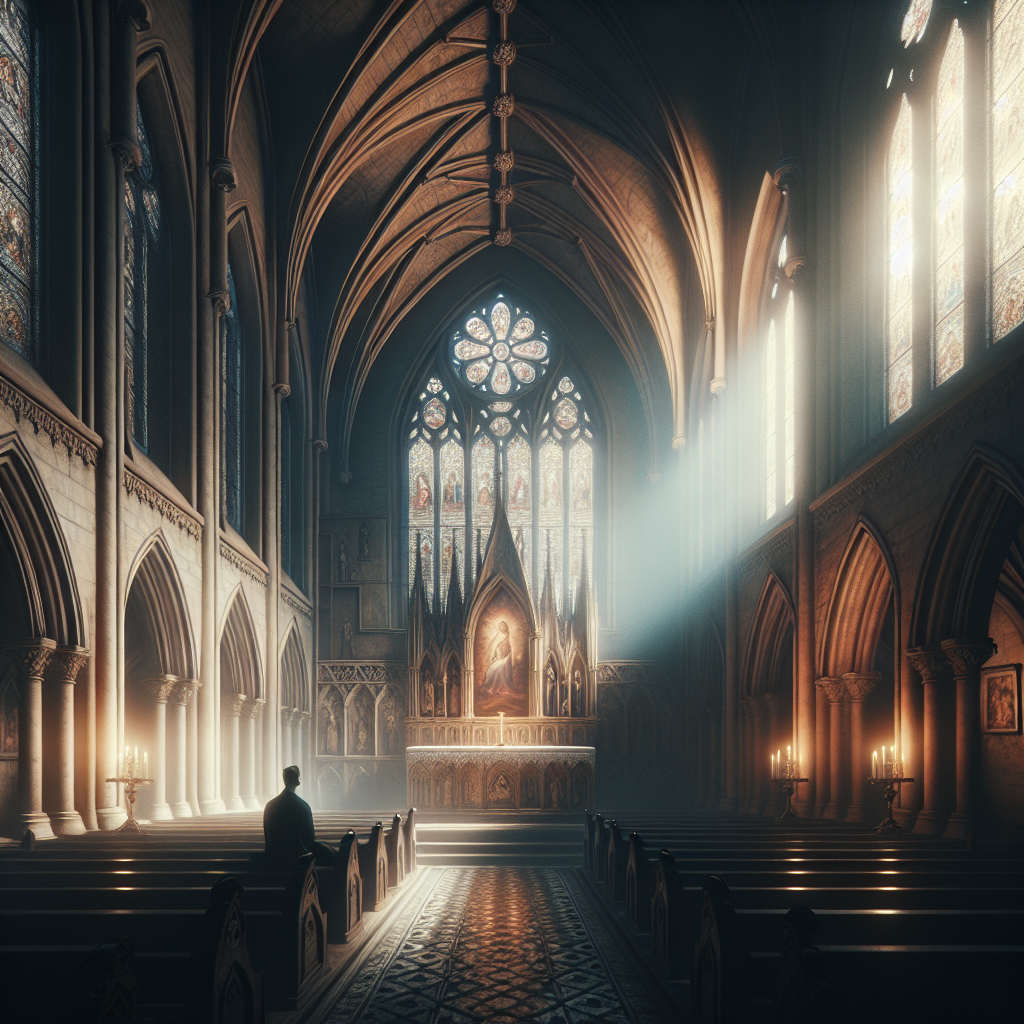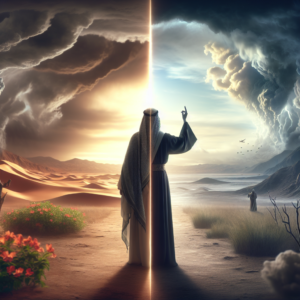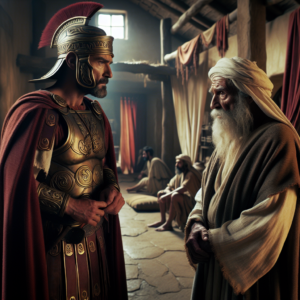Spiritual Devotional about Sacred Art
Embracing the Divine Through Sacred Art: A Journey of Faith and Inspiration
Greetings, dear friends in Christ!
Today, let us embark on a colorful and enriching journey into the world of Sacred Art—an inspiring tapestry that weaves together our faith, history, and spiritual growth. Just as the Psalmist exclaims, "Let everything that has breath praise the Lord!" (Psalm 150:6), Sacred Art invites us to engage our senses and our hearts in a vibrant symphony of worship.
The Power of Visual Worship
From the captivating frescoes of the Sistine Chapel to the serene icons of Eastern Orthodoxy, Sacred Art has always been a vessel for divine expression. These artworks are more than mere decorations; they are visual sermons that speak to our souls. They mirror the biblical principle found in Exodus 35:31-32, where God fills Bezalel "with the Spirit of God, with wisdom, with understanding, with knowledge and with all kinds of skills—to make artistic designs."
Just as Bezalel was called to create the Tabernacle’s stunning beauty, contemporary artists are called to use their God-given talents to illuminate our places of worship and our personal faith journeys. These visual testimonies are reminders of the divine craftsmanship that brings us closer to the Creator.
Icons: Windows to Heaven
One of the most profound expressions of Sacred Art is the icon. Often referred to as "windows to Heaven," icons are not just beautiful paintings but spiritual tools. An icon draws us into contemplation and prayer, serving as a bridge between the earthly and the divine. As we gaze upon these sacred images, we are reminded of Hebrews 12:1, which speaks of a "great cloud of witnesses" encompassing us.
Icons allow us to witness and be witnessed by the saints who have gone before us. They remind us that we are part of a spiritual continuum, interconnected with those who have devoted their lives to God’s glory.
Artistic Expression in Modern Worship
The influence of Sacred Art isn’t confined to the walls of ancient churches or old manuscripts; it is flourishing in modern forms as well! From contemporary Christian music album covers to stunning visual displays in mega-churches, today’s artistic expressions continue to glorify God. Just as Proverbs 19:21 says, “Many are the plans in a person’s heart, but it is the Lord’s purpose that prevails,” so too do these modern works serve the Lord’s purpose in reaching new generations.
Modern mediums like digital art and multimedia installations offer fresh ways to convey timeless truths. These expressions create new opportunities for engagement, ensuring that the message of Christ resonates in today’s digital age.
Participating in Sacred Art
Perhaps you feel a stirring in your heart, a call to contribute to this rich tradition. Remember, you don’t have to be a renowned artist to participate in Sacred Art. Whether it’s through simple sketches, intricate needlework, or even writing poetry, your artistic offerings can become a form of worship.
Ephesians 2:10 reminds us that "we are His workmanship, created in Christ Jesus to do good works, which God prepared in advance for us to do." Your creative efforts, no matter how modest, are a testament to God’s handiwork in you.
A Call to Reflect and Create
So, let’s be inspired today to reflect on the sacred art that surrounds us and consider how we might contribute to this ever-growing living gallery. Take a moment to visit local churches, cathedrals, or art galleries that house these treasures. Meditate on the profound messages conveyed through brushstrokes and chisel marks.
In closing, let us remember that Sacred Art is a reminder of God’s eternal beauty and boundless love. It calls us to elevate our hearts and minds, drawing closer to the divine presence. As the Apostle Paul beautifully writes, "Finally, brothers and sisters, whatever is true, whatever is noble, whatever is right, whatever is pure, whatever is lovely, whatever is admirable—if anything is excellent or praiseworthy—think about such things" (Philippians 4:8). May Sacred Art help us to dwell on these virtues, inspiring our faith and uplifting our spirits.
Grace and peace to you all, as we continue to explore and celebrate the divine connection through Sacred Art. Amen.
Explore and dig up answers yourself with our BGodInspired Bible Tools! Be careful – each interaction is like a new treasure hunt… you can get lost for hours 🙂
Q&A about Sacred Art
Certainly! Here’s a Q&A based on the topic of Sacred Art:
Question 1: What is Sacred Art?
Answer: Sacred Art refers to artistic works that are created with the purpose of stimulating, reflecting, and manifesting spiritual and religious devotion. It includes a wide range of mediums such as painting, sculpture, architecture, stained glass, iconography, and religious texts. The content often conveys or illustrates messages derived from religious traditions, beliefs, and sacred narratives.
Question 2: What are some common themes in Sacred Art?
Answer: Common themes in Sacred Art include depictions of deities (such as gods and goddesses), religious figures (such as saints, prophets, and angels), events from sacred texts (such as the Bible, Quran, Bhagavad Gita, etc.), symbols representing faith (like the cross, crescent, Om symbol), and scenes or landscapes relevant to religious traditions, such as temples, churches, or mystical landscapes.
Question 3: How does Sacred Art function within religious spaces?
Answer: Sacred Art often serves multiple functions within religious spaces. It enhances the aesthetic and spiritual atmosphere, aiding in the creation of a serene and contemplative environment. It also serves as a didactic tool, teaching religious narratives and doctrines to believers. Additionally, Sacred Art acts as an instrument of veneration and worship, providing focal points for prayer and meditation.
Question 4: What is the significance of iconography in Sacred Art?
Answer: Iconography in Sacred Art holds profound significance as it involves the representation of sacred symbols and figures in a manner that conveys specific religious meanings and theological truths. Icons are often loaded with symbolic attributes and are crafted following strict canonical guidelines to ensure theological accuracy. In traditions such as Eastern Orthodoxy, icons are considered a window to the divine, bridging the temporal and the eternal.
Question 5: Can you name a few renowned examples of Sacred Art?
Answer: Certainly! Some renowned examples of Sacred Art include:
- The Sistine Chapel Ceiling painted by Michelangelo in Vatican City.
- The Taj Mahal in India, an exquisite example of Islamic art and architecture.
- The stained glass windows of Chartres Cathedral in France.
- Leonardo da Vinci’s "The Last Supper" fresco.
- The ancient Buddhist sculptures of the Ajanta Caves in India.
Question 6: How has Sacred Art evolved over the centuries?
Answer: Sacred Art has evolved significantly over the centuries, reflecting changes in religious, cultural, and artistic contexts. Early sacred art was often characterized by symbolic and abstract forms aimed at conveying supernatural themes. During the Medieval period, the focus shifted towards more detailed iconography and illuminated manuscripts. The Renaissance brought a heightened sense of realism, humanism, and anatomical accuracy. In modern times, sacred art continues to evolve, incorporating contemporary artistic methods and materials while still conveying time-honored religious themes.
Question 7: How do different religious traditions approach Sacred Art?
Answer: Different religious traditions have unique approaches to Sacred Art:
- Christianity: Often features iconography, frescoes, stained glass, and sculptures portraying biblical scenes, saints, and the life of Christ.
- Islam: Traditionally avoids representational imagery and instead focuses on geometric patterns, calligraphy, and intricate architectural designs due to aniconism.
- Hinduism: Utilizes vibrant and intricate depictions of gods and goddesses, elaborate temple sculptures, and mythological scenes.
- Buddhism: Features statues of the Buddha, bodhisattvas, mandalas, and thangkas, rich in symbolism and meditation aids.
- Judaism: Conventional Jewish art avoids depictions of God, instead emphasizing symbolic and abstract elements. Synagogue art features beautiful Torah scrolls, ceremonial objects, and mosaics.
This diverse array of approaches underscores the importance of culture, theology, and doctrine in shaping Sacred Art.
I hope this Q&A helps you understand the multifaceted world of Sacred Art! If you have any further questions, feel free to ask.


